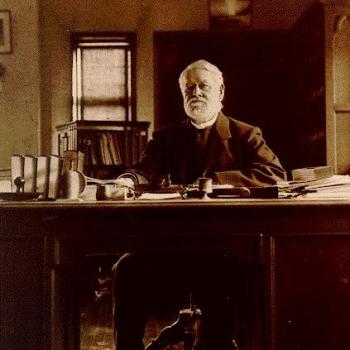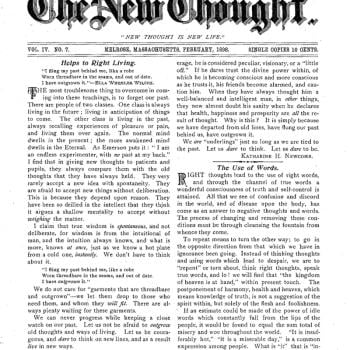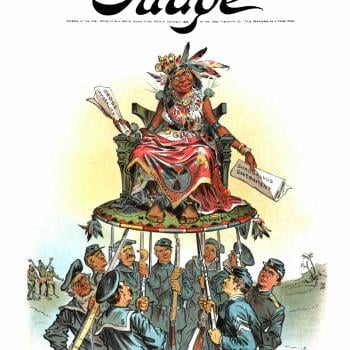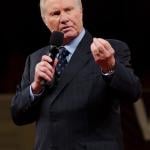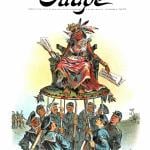Whenever I taught my long-running course on World Religions, I would always greet my students on the opening day with a simple yet encouraging statement: “You’re all going to die.” Although some assumed that I was announcing a new and rather harsh grading policy, I soon explained my meaning. Death is inevitable, yet we cannot contemplate the extinction of our identities, and therefore – through most of human history – we contemplate various forms of survival or continuity. Awareness of death is a fundamental building block of religion, and religions. Poet Philip Larkin defined religion as “That vast moth-eaten musical brocade/Created to pretend we never die.”
This has been in my mind recently in work I am doing on the intimate relationship between demography and religion, fertility and faith. Societies with high fertility and high birth rates are almost always very religious. When fertility declines – as it is presently doing, precipitously, around the world – then religion shrinks with it. The exact relationship between the two trends is not clear, or the direction of cause and consequence, but something critical is happening. Witness distinguished scholarship by (among others) Eric Kaufmann, Mary Eberstadt, Callum Brown, and David Goldman. Low birth rates, low religion – and very specifically, a sharp contraction of organized or institutional religion, and by no means only of Christianity. I think especially of Europe from the 1960s onward, when a sudden move to sub-replacement fertility was accompanied by a no less sudden and sweeping secularization.
But as I pursue this project, currently intended for a book to be published next year, I realize that I am missing the other key part of the puzzle, namely death and death rates. Yes, everybody still dies. But our chances of encountering or witnessing it are far, far less than they would have been in earlier eras, and I will argue that that shift is critical to the decline of faith, and to secularization. This represents a fundamental change in life experience that has in recent times become so obvious that we scarcely notice it.
In what follows, let me compare Europe and North America today with what conditions might have been like in, say, 1850 or 1900.
Over the past hundred or 150 years, life expectancy has grown steeply in all advanced countries (with Russia as a notorious outlier). If we list the world’s nations by life expectancy, the poorer countries of Africa and South Asia are the shortest lived, with the greatest longevity in Europe and East Asia. In those latter regions, revolutions in medicine and hygiene mean that we are simply far less likely to witness frequent funerals or deathbeds than were our predecessors in earlier eras. That particularly means deaths involving babies or small children, or of women who die in childbirth. The plunge in maternal mortality rates has been almost as spectacular as that in infant mortality.
Changes in fertility have also played a vital role in changing consciousness of death, and the transience of life. Among other things, it means that any given person today has far fewer siblings or close relatives, all the uncles, aunts and cousins that would once have proliferated, and who would have died at relatively early ages. Putting those trends together, it is vastly less likely that a European (or American) in 2019 will during the course of a given year know intimates who will die, and who will require the services and consolations of religion. And overwhelmingly, deaths are a matter for the old, and the very old. Even when deaths occur, they are less visible because they almost certainly take place outside the family home, usually in hospitals.
This quite literal life and death shift of attitudes has multiple effects. As we look at the modern decline in fertility, one key factor is that women postpone childbearing, often into their late thirties or beyond. Such a decision would have seemed reckless or foolhardy to earlier generations, who had justifiable doubts about whether anyone could rely on surviving into those years, and moreover, in good health. A woman who became a mother at age 35 or 40 stood a very high chance of failing to see that child reach adulthood, and leaving a child orphaned or motherless. Against that background, beginning parenthood earlier – probably in the late teens – was a rational decision. It also made high fertility rates almost certain. So did the sense that you needed large numbers of offspring to compensate for the inevitable deaths of several babies and infants. Awareness of death prompts the initiation of life.
The transition away from early mortality has sweeping consequences for religion and religious behavior. Awareness of the death of others is likely to make survivors more conscious of their own mortality, as an event that could occur to them in the near future. Although this is no iron rule, we can reasonably expect such conditions to make people think more about concepts like survival after death, and about the supernatural realm in general. The prospect of death gave concern not just to the very old, but to teenagers and young adults:. How could it not?
But death faded as an omnipresent reality. Think this through in terms of the functions of organized religion, which so often involve births, marriages and funerals – or as some wryly say, “hatched, matched and dispatched.”
We trace the impact on baptisms, which became far less common in the Europe of the late twentieth century. (All Europe’s major churches practice infant baptism). For one thing, there were far fewer children to be baptized, and thus to bond families to the church. But changes of attitude also played their part. Prior to the twentieth century, high infant mortality made it quite likely that a new baby would die within the first months or years of life, so that it was imperative to offer baptism as soon as possible. Reinforcing that idea was a common belief that baptism averted the peril of hellfire. As the century progressed, the supernatural theme declined to vanishing point, while better medicine largely removed any need for early church intervention. Instead of a near universal rite of passage, the ritual came to be a conscious decision by those with a particular commitment to the church.
A society that by our standards is immersed in death and dying also offers many functions for religious professionals and clergy, in some faiths more than others. In Catholic societies especially, clergy were traditionally expected to attend the death-bed, but other denominations also gave ministers a prominent role in comforting the dead and consoling survivors. At least in popular religious culture, believers felt that proper assistance at the moment of death could make the difference between eternal salvation and damnation. For centuries, the “good death” represented a vast theme in popular religious literature and sermons. There is a vast scholarly literature on this theme as it affected the medieval and early modern periods.
Specifically within Catholicism, theological and liturgical usage contributed much to these changes. For centuries, popular religious belief put huge weight on the Last Rites, and the assumption that those rituals were a key element in the transition to the forgiveness of sins, and a blessed immortality. The church might not have asserted or supported those beliefs formally, but they were widely accepted. It thus represented a massive shift in the 1970s when the church explicitly drew the distinction between the more general anointing of the sick and the long-familiar Extreme Unction, which was popularly portrayed as a death ritual. That contributed powerfully to ending the priest’s indispensable role at the deathbed.
Between them, weddings, baptisms, and funerals represented a very sizable part of what clergy did. When we remove “dispatched” from the package, we not only excise a major share of clergy time, but a very significant element of their whole raison d’etre. An increasingly indifferent public no longer saw any necessity to involve the church at any point in their lives or family arrangements. The modern “decline of death” contributed powerfully to that trend.
A society’s degree of awareness of death – or its ignorance – is a powerful variable in determining its religious orientation. By this standard, late twentieth century Europe represented a startling new world, and a far more secular one.
Or as a more general principle for research: never try to understand religion – anywhere, anywhen – without paying full attention to death and dying.




